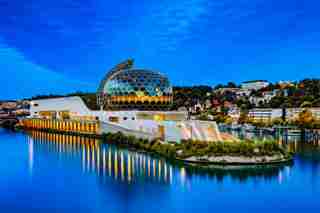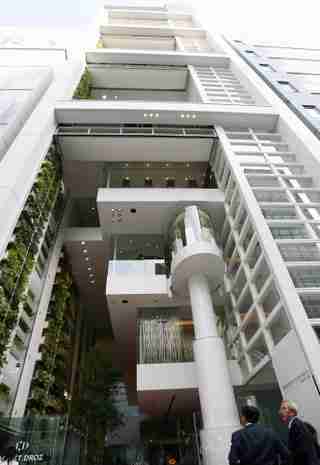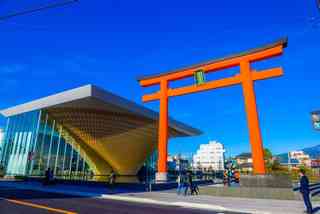Winner of the 2014 Pritzker Prize, Japanese architect Shigeru Ban gained international acclaim by using unorthodox materials such as cardboard and paper for structures designed to aid disaster victims around the globe. His visionary aesthetic, at once fluid and geometric, has taken shape in temporary structures like relief housing, a cathedral, and a bridge—all with an innate understanding of impermanence, the environment, and humanity. His ability to design buildings that blend human needs with breathtaking visual dynamism was honed at Manhattan’s Cooper Union School of Architecture, where he studied under John Hejduk, one-fifth of the famed New York Five group of architects. In addition to his humanitarian work, Ban has created museums, homes, and short-term pavilions, each showcasing an innovative use of space and material. And just recently, the celebrated architect was named as an extraordinary innovator in the New York Times 's " The Greats " issue. Here, Architectural Digest presents a selection of his most notable works.

Located on Île Seguin, an island on the Seine River in the western suburbs of Paris, France, La Seine Musicale is a striking music and performing arts center. Designed by Shigeru Ban and Jean de Gastines, the structure was completed in spring 2017. Much of the energy that runs the building comes from a curved solar panel that covers an auditorium.

Completed in 2007 and located in Tokyo, Nicolas G. Hayek Center is the latest headquarters for Swatch Group Japan. Designed by Shigeru Ban, the multilevel building has an exposed elevator and a green wall, both of which give the structure a lot of character in the busy Ginza district.

Mount Fuji World Heritage Center in Shizuoka, Japan, is Shigeru Ban's most recent design. The inverted cone half-contained within a glass sums up Ban's inimitable vision in architecture: normal structures that appear anything but normal.
The undulating fiberglass roof of the Centre Pompidou-Metz in Metz, France, forms a large hexagon over the galleries and restaurant within. The museum, whose interior framework resembles the intricate weave of a Chinese hat, has been one of the area’s most popular tourist attractions since it opened in 2010.
Surrounded by a screen of woven wood, the Aspen Art Museum in Colorado was completed in 2014. The interior, enclosed by glass, features gallery space, a gift shop, a café, and a large glass elevator that goes up to the rooftop sculpture garden.
New Zealand’s Cardboard Cathedral, built after the 2011 Christchurch earthquake destroyed the city’s namesake church, is a temporary A-frame structure made of steel, wood, polycarbonate, and interior beams of cardboard tubes. Its most recognizable feature, however, is the large-scale stained-glass window at its front featuring images from the original cathedral’s rose window.
Proving cardboard can be a structurally sound building material, the Paper Bridge was constructed over the Gardon River in southern France in 2007. Erected for only six weeks, the bridge was made with cardboard tubes, recycled paper, and plastic steps, with a foundation of wood boxes filled with sand.
Constructed on New York’s Pier 54 in 2005, the Nomadic Museum was a temporary building designed to showcase the large-scale photographs of artist Gregory Colbert in an exhibition called “Ashes and Snow.” Originally built using steel shipping containers and cardboard tubes, the museum was made with different materials as it moved to California, Tokyo, and Mexico City.
Designed for Expo 2000 in Hannover, Germany, the Japanese Pavilion features a wavelike roof made with PVC and paper membranes supported by a cardboard-tube skeleton. Constructed to produce as little waste as possible once dismantled, the pavilion remains the largest paper structure ever built to date.
Shown here at a 2005 exhibition in New York’s Museum of Modern Art, the Paper Log House was originally created as a temporary shelter for victims of the 1995 earthquake in Kobe, Japan. The structure featured walls made with cardboard tubes stuffed with shredded paper insulation and a ceiling made with cardboard, fiberglass insulation, and plastic sheets.
Located two hours outside Seoul, South Korea, the Haesley Nine Bridges Golf Clubhouse features a distinctive glass atrium with treelike timber columns that seamlessly integrate with the ceiling’s hexagonal wood grid. Completed in 2009, the clubhouse features separate spaces for regular members and VIPs.
